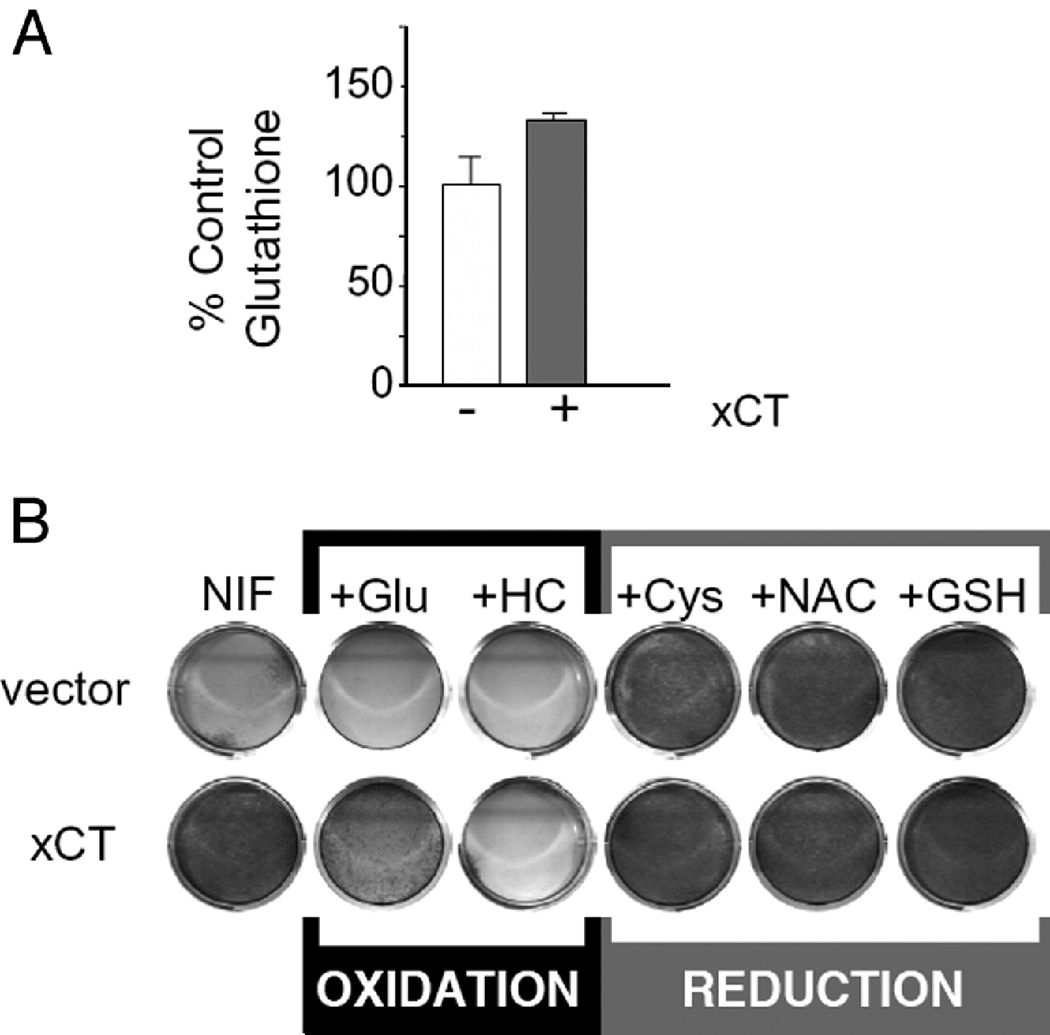Figure 3.
The xCT phenotypes are do due to its effects on intracellular redox. A. xCT expression affects cellular GSH levels. NIH 3T3 cells infected with empty HM II retrovirus (open bars) or HM II expressing xCT (solid bars). Cells overexpressing xCT contained greater levels of GSH than vector controls. B. The addition of anti-oxidants phenocopies the action of xCT in nifedipine (Nif) resistance. The addition of cystine (cys), glutathione (GSH), or N-acetylcysteine (NAC) to growth media increases cellular nifedipine resistance. The addition of the glutamate (glu) or homocysteine (HC), which act to oxidize cells, decreases cellular nifedipine resistance.

